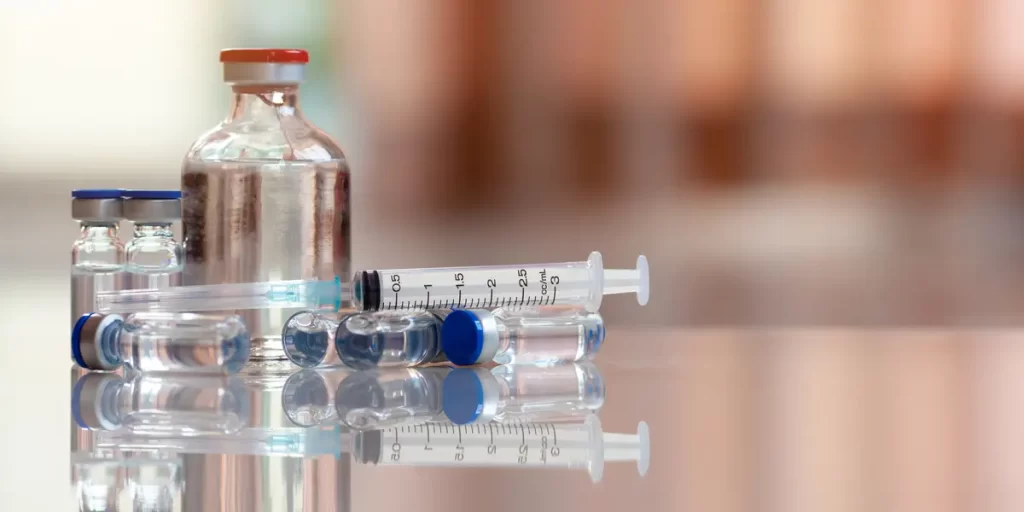
Ketamine is a powerful drug that is used medically as an anesthetic or as a painkiller. While it’s an effective prescription medication, ketamine has some hallucinogenic effects that make it a target for abuse and addiction.
When used recreationally, ketamine can make a person feel dissociated with their physical existence (i.e., “out of body”). The drug also has addictive features, so using it can lead to ketamine addiction. Ketamine has become a fairly common party drug and although its effects wear off quickly, people can become dependent on taking ketamine.
It’s important to note that the medical and non-medical uses of ketamine have different side effects. While medical use can be beneficial and safe, there is no safe level of recreational ketamine use. Learning the side effects and characteristics of ketamine use can help you understand ketamine abuse and the risk of addiction associated with its use.
What is Ketamine?
Ketamine is defined as a type of dissociative drug that is used to manage pain and it’s used as a medical anesthetic. Ketamine is mostly used as anesthesia in children or in veterinary medicine.

It's time to get your life back.
If you are struggling with addiction and co-occurring mental health, our expert team is here to guide you every step of the way. Don’t wait— reach out today to take the first step toward taking control of your life.
More recently, ketamine was approved as a fast-acting medication for depression that comes as a nasal spray.
Some of the characteristics that limit ketamine’s medical uses are reasons for its recreational use. Because taking ketamine can cause people to hallucinate or dissociate, it is often misused as a party drug.
Recreational ketamine is often known by street names including Special K or Kit Kat. It can come in liquid form, to be injected, or in powder form, to be snorted or mixed into drinks.
Ketamine works through a brain chemical called glutamate. Glutamate is an excitatory chemical, which means it helps to activate other brain and nerve cells. It can also increase dopamine in the brain, which is associated with positive feelings. Despite the chemicals that can have a positive effect, there are many risks and side effects of taking ketamine recreationally.
Side Effects of Ketamine Use
The side effects of ketamine use can vary depending on the person, dose and type of use. For example, medical use of ketamine can produce feelings of calmness and relief from pain as well as fast-acting relief from depression symptoms.
However, when it is used recreationally, there can be more risk involved with ketamine side effects since the drug is not controlled or regulated. Some of these side effects can include:
- Agitation
- Loss of consciousness
- Hallucination
- Loss of memory
- Calmness and relaxation
- Distortion of light and sound
Ketamine can also produce a psychosis-like effect. People taking ketamine might experience serious mental health symptoms that can cause erratic or risk-taking behaviors. While the physical side effects of ketamine are dangerous, the mental health effects should also be taken seriously.
Is Ketamine Addictive?
The Drug Enforcement Administration classifies ketamine as a Schedule III controlled substance, meaning it has a low-to-moderate potential for physical and psychological dependence or addiction. While this is lower risk than some other illicit substances it doesn’t mean that you can’t get addicted to ketamine.
As a moderate-risk substance, ketamine is not in the highest category for physical addiction. What can make ketamine addictive is feeling high or having out-of-body experiences. If taken frequently, the body can become tolerant of ketamine and will require a higher dose to produce the desired effect.
People may also become addicted to the escape that they experience when using ketamine. Some people may come to depend on ketamine to help them manage symptoms of another mental health condition and it can prevent them from seeking proper treatment.
Risks Of Ketamine Abuse
Taking ketamine is risky and can impact physical and psychological health. For example, taking too much ketamine or mixing with other drugs can lead to an adverse reaction that can have long-term consequences.
Ketamine abuse can increase the risk of overdose, which includes symptoms like the loss of consciousness or slowed breathing. Taking too much ketamine can also lead to aggressive or impulsive behavior, risk taking or psychological symptoms like psychosis or hallucinations. Long-term ketamine use is also linked with gastrointestinal damage, liver problems or increased mental health symptoms.
While some of these symptoms will subside with the effects of the drug, people can become tolerant and dependent on ketamine. This change can mean people using ketamine have to take higher doses to have the same effect. It can also lead to drug-craving and addictive behavior. Ketamine abuse can disrupt health and functioning in everyday life.
Statistics On Ketamine Use
Ketamine is a relatively common party drug, though slightly less common compared to drugs like MDMA or cocaine. It is particularly common among people who attend clubs, raves or festivals. Ketamine became popular in the 1980s and 1990s as rave culture grew in popularity.
It’s estimated that around 0.1% to 4% of the population has used ketamine, although ketamine facts and statistics use are not well studied. It is common for ketamine to be used alongside other drugs, like alcohol, heroin or cocaine.
Ketamine abuse occurs around the world and throughout the United States. Abuse of the drug has been reported on by the Community Epidemiology Working Group.
Treatments For Ketamine Addiction
Seeking ketamine addiction treatment can be the first step in breaking the cycle of dependence on ketamine and beginning the process of recovery. There is always a risk associated with taking ketamine for recreational purposes, and the consequences can be serious.
Treatment for a ketamine addiction may start with medical detox, which includes medical supervision while ketamine completely leaves the system. Detox is usually followed by a formal inpatient or outpatient drug treatment program, which works to address the underlying causes, thoughts and behaviors related to ketamine abuse. Treatment can also help people to develop new coping strategies that do not involve substances and help people get treatment for any underlying or related mental health conditions.
If you or a loved one are living with a ketamine addiction and would like to receive help, contact The Recovery Village Ridgefield today to speak with a representative about treatment options. You deserve a healthier future, call today.



